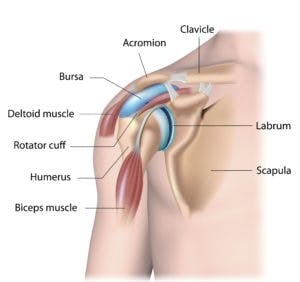Research suggests that hands-on techniques may be best. So, if you are in need of knee arthritis treatment in Visalia, this post may help.
There are more than 100 different types of arthritis, but osteoarthritis is by far the most common. Osteoarthritis is a painful condition that most frequently occurs in people who are older than 50, but it can be seen in younger people as well. In a normal joint, articular cartilage serves as a natural cushion between bones that absorbs shock and prevents the bones from rubbing against one another. In osteoarthritis, this cartilage gradually diminishes, which creates an environment where bones have less protection and can eventually come in contact in severe cases.
Any joint in the body can be affected by osteoarthritis, but it’s especially common in the knees. Patients who develop knee osteoarthritis typically experience pain that gets worse with physical activity, swelling around the knee, a feeling of warmth in the joint, stiffness (especially in the morning or after sitting for a while), and sometimes a creaking sound that’s heard when the knee moves. These symptoms in turn lead to less mobility of the knee, which make it more difficult to walk and perform basic movements like getting in and out of a car and climbing stairs.
Age is the most common cause of knee osteoarthritis, since the ability of cartilage to heal decreases as a person gets older. There are a number of other factors that may increase the chances of developing knee osteoarthritis, but being overweight is another major one. The knees absorb a great deal of impact when standing, and being overweight or obese will place even more pressure on the knees, which stresses the tendons and other structures of the joint. This can accelerate the process of cartilage thinning away, which will increase the chances of getting knee osteoarthritis or make pain worse for those who already have it.
This is why it’s strongly advised to lose weight if you have knee osteoarthritis or are at risk for getting it, as losing just one pound can reduce the amount of pressure on the knees.
If weight loss isn’t appealing and you are looking for natural knee arthritis treatment in Visalia, there are other options.
One effective way to address symptoms is by becoming more active and performing exercises that improve the strength and flexibility of the muscles surrounding the knees. Doing this not only relieves the pressure on the knees, but also increases fitness levels, which can allow you become more active and improve your quality of life.
A physical therapist can help in all of these areas, but they can also perform manual therapy, in which they use only their hands to move, massage, and manipulate the knee joint in various ways to further reduce pain and other symptoms. The effectiveness of manual therapy for knee osteoarthritis has been pointed out in a number of studies, including one published in 2018 that concluded with the following statement:
This review indicated orthopedic manual therapy compared with exercise therapy alone provides short-term benefits in reducing pain, improving function, and physical performance in patients with knee osteoarthritis
Physical therapists are movement experts that work with patients on a one-on-one basis to determine which treatments will be most beneficial for their condition. So if you’re experiencing any knee-related issues that may be knee osteoarthritis or want to reduce your risk for the condition, we strongly recommend that you take action by getting in touch with one of our physical therapist today.

